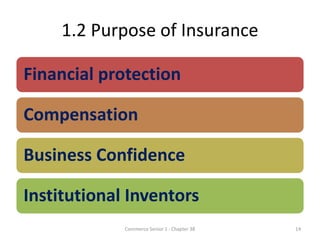The Of Pacific Prime
The Of Pacific Prime
Blog Article
The Single Strategy To Use For Pacific Prime
Table of ContentsPacific Prime Fundamentals ExplainedRumored Buzz on Pacific PrimeThe 2-Minute Rule for Pacific PrimeGetting The Pacific Prime To Work
In most states, the insurer is required to send you a duplicate of the changes to your policy. It is necessary that you check out Endorsements or Motorcyclists so you understand exactly how your plan has actually changed and if the plan is still ample to satisfy your demands. To get a copy of your insurance coverage, please call your insurance policy representative or business.
The Institute of Medication (IOM) Committee on the Consequences of Uninsurance launches an extended assessment of proof that addresses the significance of wellness insurance coverage with the publication of this report. Coverage Matters is the first in a collection of six records that will be issued over the next two years documenting the truth and consequences of having actually an estimated 40 million people in the United States without health and wellness insurance protection.

The smart Trick of Pacific Prime That Nobody is Discussing
The goal of this series of research studies is to redouble plan interest on a longstanding problem. Adhering to the lengthiest financial growth in American background, in 1999, an approximated one out of every six Americans32 million grownups under the age of 65 and greater than 10 million childrenremains without insurance (Mills, 2000).

10 percent of the population make up 70 percent of health care expenses, a connection that has continued to be consistent over the past three years (Berk and Monheit, 2001) - group insurance plans. Therefore health and wellness insurance continues to offer the function of spreading out danger even as it progressively funds regular care. From the viewpoint of healthcare carriers, insurance coverage lugged by their individuals aids protect a profits stream, and communities gain from economically feasible and secure healthcare practitioners and institutions
Government supplies medical insurance to populations whom the personal market might not offer effectively, such as disabled and senior persons, and populaces whose access to health and wellness care is socially valued, such as kids and pregnant ladies. The best ends of wellness insurance policy protection for the individual and areas, including office neighborhoods of workers and employers, are boosted health and wellness outcomes and lifestyle.
Everything about Pacific Prime
Employees rate health insurance coverage initially without a doubt in importance amongst all the benefits offered in the office (Salisbury, 2001). There have actually been substantial investments of individual and public funds to offer wellness insurance policy, several individuals still have no coverage. Despite considerable reporting of survey searchings for and healthcare study results, the general public stays overwhelmed and misinformed concerning Americans without medical insurance and the effects of doing not have insurance coverage.

Without doubt, the complexity of American healthcare financing mechanisms and the wide range of sources of details add to the general public's confusion and skepticism regarding medical insurance stats and their analysis. This report and those that will comply with objective to distill and provide in easily easy to understand terms the substantial research that bears on inquiries of medical insurance coverage and its relevance.
Fifty-seven percent of Americans polled in 1999 thought that those without medical insurance are "able to get the care they require from physicians and hospitals" (Blendon et al., 1999, p. 207). In 1993, when national interest was focused on the issues of the click to investigate uninsured and on pending healthcare regulation, simply 43 percent of those surveyed held this belief (Blendon et al., 1999).

They additionally obtain less preventive services and are less likely to have regular take care of chronic problems such as hypertension and diabetes mellitus. Chronic illness can lead to expensive and disabling difficulties if they are not well managed (Lurie et al., 1984; Lurie et al., 1986; Ayanian et al., 2000). One nationwide survey asked even more than 3,400 grownups regarding 15 extremely major or morbid problems.
Pacific Prime Fundamentals Explained
Added evidence exists later in this chapter in the conversation of insurance and accessibility to healthcare. https://www.twitch.tv/pacificpr1me/about. People without wellness insurance coverage are young and healthy and pick to go without coverage. Nearly half (43 percent) of those evaluated in 2000 believed that people without wellness insurance coverage are most likely to have illness than people with insurance coverage
Voters and plan manufacturers in focus team discussions define those without insurance coverage as young people who have the chance to be covered and feel they do not need it (Doorperson Novelli, 2001). Compared to those with at the very least some personal coverage, the without insurance are much less likely to report being in exceptional or excellent health (Firm for Health Care Study and High Quality, 2001).
RESOURCE: Center for Expense and Funding Studies, Company for Medical Care Research and High quality, based upon MEPS information. Young person between 19 and 34 are much more most likely to lack medical insurance than any type of other age. This is chiefly due to the fact that they are much less usually qualified for employment-based insurance coverage as a result of the nature of their job or their brief tenure in it.
The understanding that individuals without insurance coverage have better-than-average health and wellness complies with from confusing the fairly young age profile of the without insurance with the far better health, on average, of more youthful individuals. This covers the web link in between wellness standing and medical insurance. For those without access to office medical insurance, bad health and wellness is a potential barrier to buying nongroup protection due to the fact that such protection might be highly valued, exclude pre-existing conditions, or be just unavailable.
Report this page